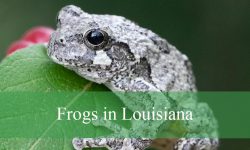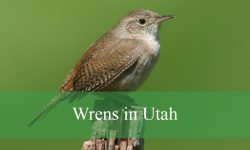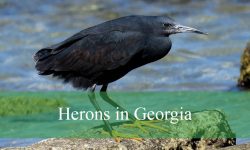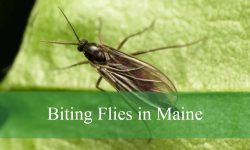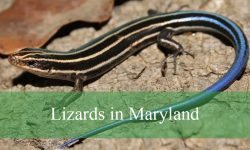It might surprise you to learn that, out of all the geckos found in Florida, only one is native! This fascinating information surprised me when I first started reading about Gecko! There are 24 distinct gecko species in the US, including invasive species, with some species being classified together based on similarities.
In this article, we’ll look at 20 different types of geckos in Florida. All of Florida’s gecko species have unique stories to tell, ranging from the shy and little Reef Gecko, which is native to the state, to the vibrant and aggressive Tokay Gecko, which was introduced through the pet trade.
Different Species of Geckos in Florida
Reef Gecko
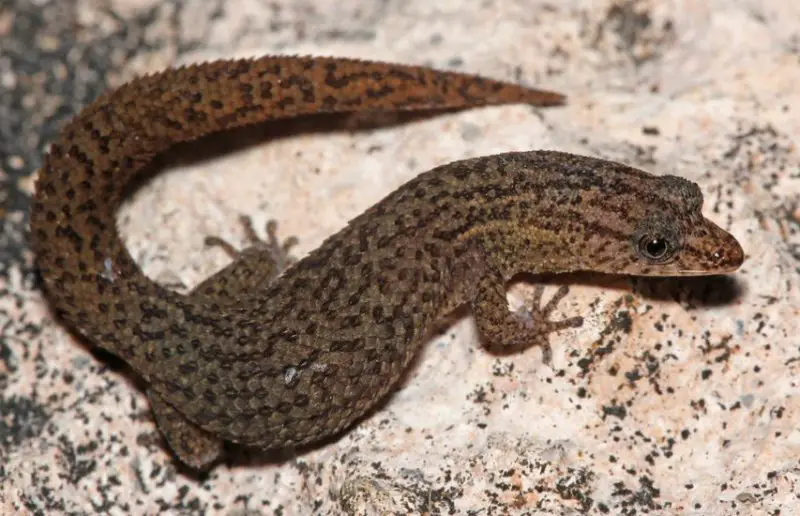
The only native gecko to Florida is the Reef Gecko (Sphaerodactylus notatus), which is also the smallest lizard in the US. With a maximum measurement of 2.25 inches (5.7 cm), it is frequently referred to as matchstick-sized. The Reef Gecko is active at dawn and dusk, preying on tiny insects and spiders, in contrast to most other geckos, which are nocturnal.
Its brown-on-brown coloring makes it a great concealment in leaf litter and empty lots. While both sexes have dark patches on their brown skin, females have three stripes on their heads. They can survive up to 20 years in captivity and lay only one egg at a time, but they are threatened by exotic species and human activity in the wild.
Tokay Gecko
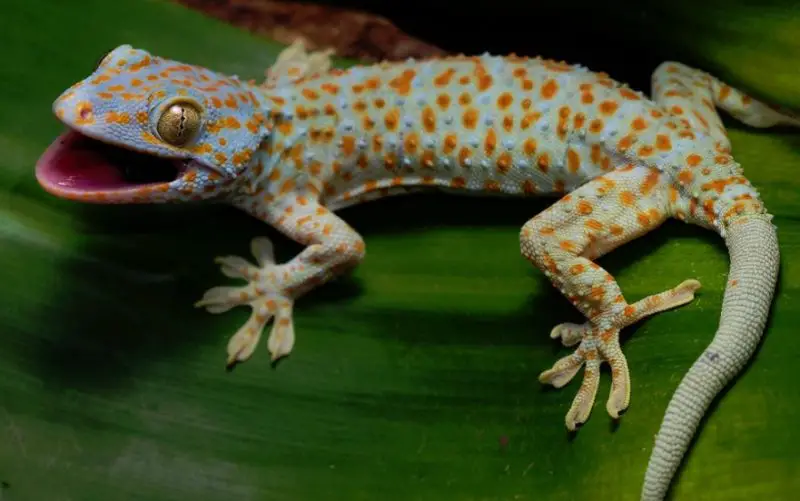
With a maximum length of 14 inches (36 cm), the Tokay Gecko, also known as the Gekko gecko, is the biggest species of gecko found in Florida. They are larger than the majority of adult geckos of other types, even at birth. These enormous creatures are often pale blue to green-gray with vivid white and orange patterns.
They have flattened bodies, large heads, and beady skin. They are well-known for making loud, recognizable calls that are audible from a great distance. Tokay Geckos are very protective of their territory and can bite for extended periods of time, resulting in blood. Frogs, other lizards, and huge insects are their food sources.
Their habitat is still relatively isolated, but they pose a threat to native frog and lizard species in Florida due to their population, which is derived from escaped or released pets.
Common House Gecko
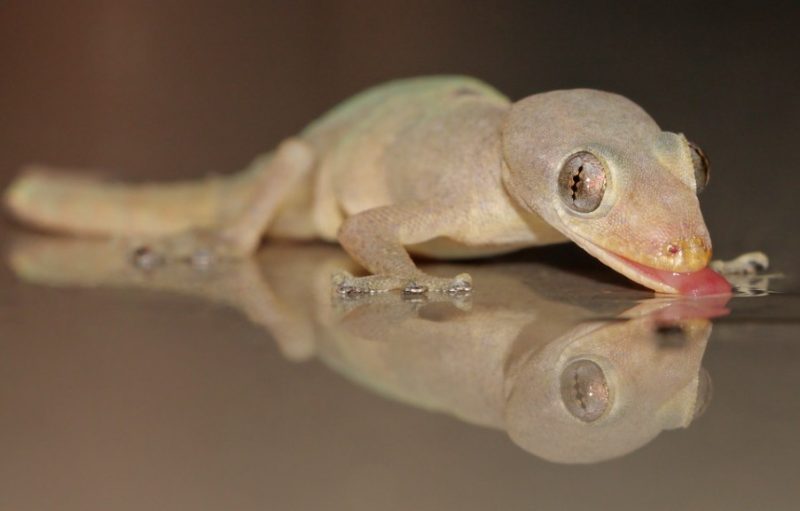
The Common House Gecko (Hemidactylus frenatus) is not a common species in Florida, despite its name. Originating from Southern Asia, it has only recently arrived in Florida, mostly in warehouse districts close to Homestead, Ft. Myers, and the Keys. This light gray, brown, or white gecko has rows of spines surrounding its tail and can reach a maximum size of 5.5 inches (14 cm).
They are aggressive toward other species and are sly nocturnal stalkers that eat lizards and small insects. They can live up to five years, lay clutches of two eggs, and are quite territorial. Smaller lizards are the only ones they pose a threat to, despite their ability to bite people.
Mediterranean House Gecko
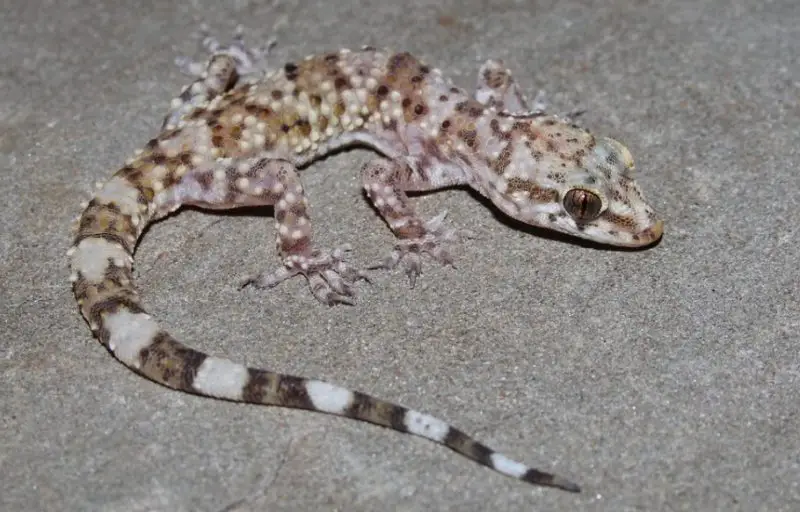
The most prevalent house gecko of all is the Mediterranean House Gecko (Hemidactylus turcicus). Alternative house gecko types are posing a growing threat to their tenacious existence in Florida. This gecko has a round nose, a flattened body, and extremely warty skin.
Its coloring varies from gray to brown, with a translucent belly and dark patches. They can grow up to 5 inches (13 cm) in length, appearing darker during the day and ghostly white at night.
They are skilled at displacing other geckos from their habitats as they forage at night. They reproduce quickly and are pesticide-resistant, laying several clutches of two eggs during the summer.
White Spotted Wall Gecko
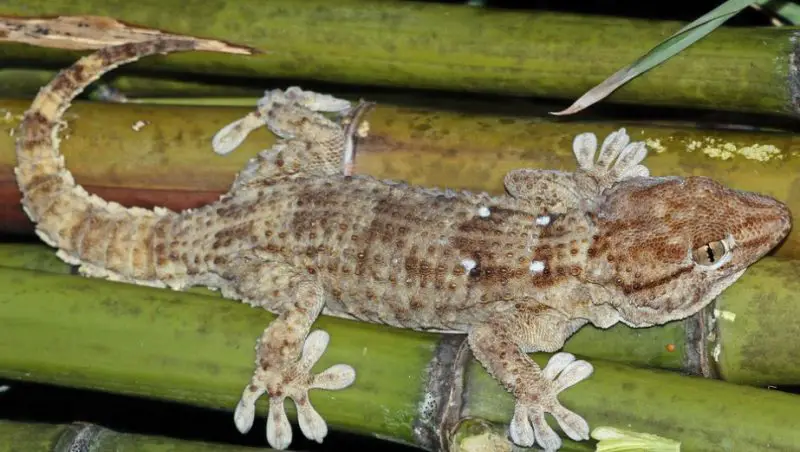
At up to 6 inches (15 cm) in length, the White Spotted Wall Gecko (Tarentola annularis) is a huge gecko. Its legs are covered in raised scales, while its tail is armored and swirling. This gecko has a white belly and two white spots on each shoulder. It is gray to tan in color. Bulging eyes and large toe pads are distinguishing characteristics. They lay clutches of one or two eggs and reside on walls.
They control their habitats and feed on insects and other geckos. They have even driven out the Tokay Gecko in Tallahassee. These geckos, which are native to Sub-Saharan and Saharan Africa, were first seen in Florida in 1999 when they escaped from a Tallahassee pet store.
Amerafrican House Gecko
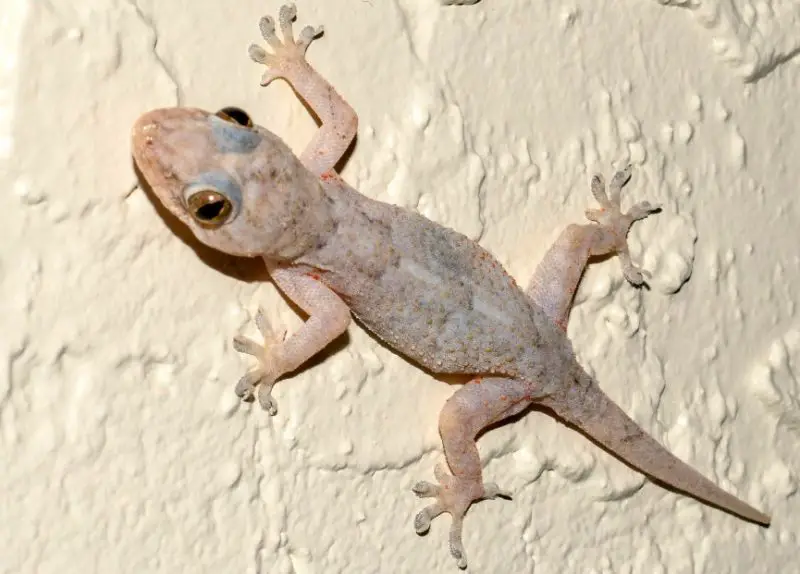
The Amerafrican House Gecko (Hemidactylus mabouia), which is native to Sub-Saharan Africa, is also called the Tropical House Gecko because of its ability to thrive in Florida. These lizards are often seen near beaches, on trees, and on the walls of dwellings. They can reach a maximum size of 5 inches (13 cm).
Nocturnal hunters have the ability to alter their skin tone in order to blend in with their environment. They consume flying and crawling insects. They have chevron stripes and dark bars on their tails, and their rough skin varies in color from brown to gray to pink.
To elude predators, they seem darker during the day. They typically conflict with the smaller native Reef Gecko due to their territorial and aggressive nature. They live for around 5 years and lay clutches of 2 eggs multiple times a season.
Flat-tailed House Gecko
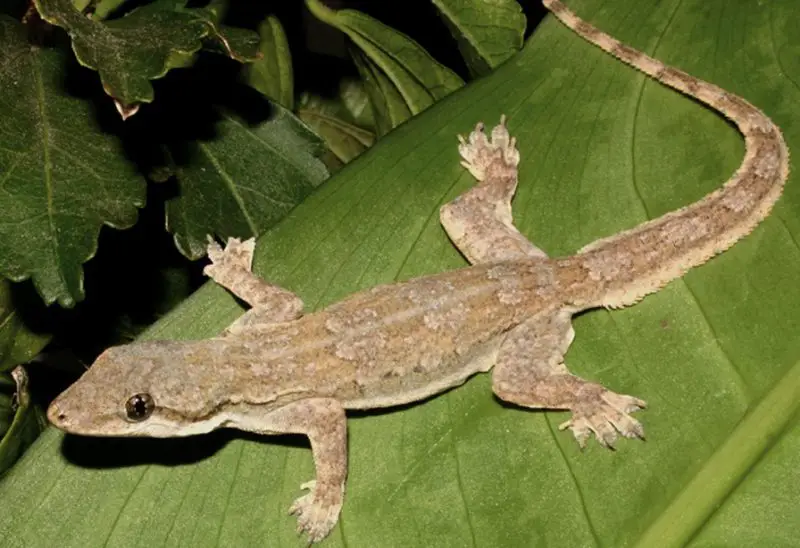
Popular as a pet, the Flat-tailed House Gecko (Hemidactylus platyurus) is also referred to as the “house gecko.” Originating in Asia, it was initially observed in Florida during the 1980s in a Clearwater strip mall. Though it is invasive, its spread hasn’t been great.
This little species has white bellies, grainy scales, a gray body with gray streaks, and a unique flat, broad tail. It can grow to a maximum length of 3.5 inches (9 cm). Their bodies include thin flaps along the sides that help them blend in with their surroundings and hide their shadows.
They are preyed upon by the White Spotted Wall Gecko and are found in metropolitan areas. Because of their peaceful disposition and restricted ability to expand their environment, they make excellent pets.
Since then, Lee and Miami-Dade counties have reported seeing them. Because of their carnivorous habits and capacity to outcompete other gecko species, their presence may be a threat to native lizard populations.
Indo-Pacific Gecko
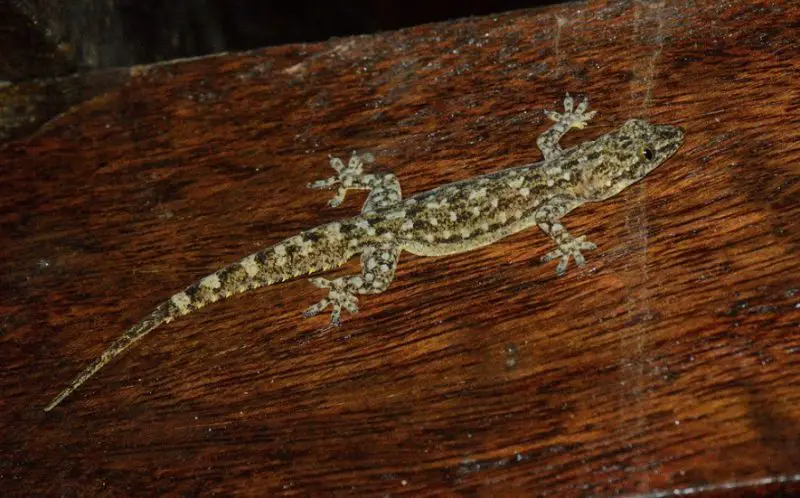
The Indo-Pacific Gecko (Hemidactylus garnotii) has a long, thin snout and a flat tail with spiny scales that resemble sawtooths along the lateral edge. It can reach a maximum length of 5.5 inches (14 cm). Its belly is lemony yellow to orange, and it has light and black markings on a dark grayish-brown background.
Because of its lengthy face, it is sometimes referred to as the “fox gecko.” It possesses the toe pads of a normal gecko but looks more like an anole. This species is parthenogenetic, meaning that all of its female members lay fertilized eggs on their own without the assistance of a man.
The Indo-Pacific Gecko traveled from Southeast Asia and the Polynesian Islands to India, where it hitched a ride on plants and building materials before settling in Florida. It is well-established along the Eastern Coast and in Southern Florida, extending from the Keys to Lake Okeechobee.
Cuban Ashy Gecko
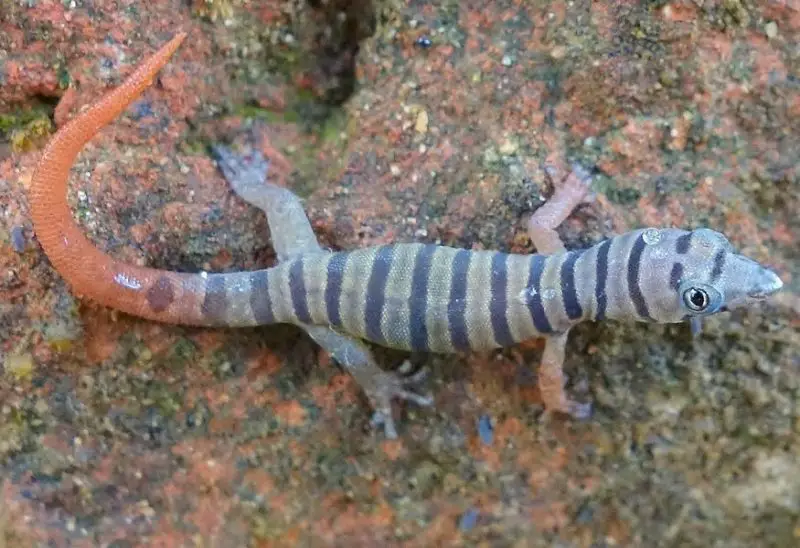
With a maximum size of 2.75 inches (7 cm), the Cuban Ashy Gecko (Sphaerodactylus elegans) is the largest dwarf species of its kind. Its skin is a dark gray-brown color with patches of pepper and salt. Juveniles have an orange tail and a greenish body with prominent bands. This arboreal gecko is active from dusk to dawn, chasing small insects near lights. It prefers to be in trees and on walls rather than on the ground.
Larger geckos, like the American House Gecko and the Common House Gecko, feed on them. They occasionally lay their solitary eggs in the nests of other geckos, including those of their predators, among leaf litter and other detritus. Originally from Hispaniola and Cuba, they have lived in the Florida Keys since the 1920s. Their distribution cannot grow because other non-native species control their numbers.
Ocellated Gecko
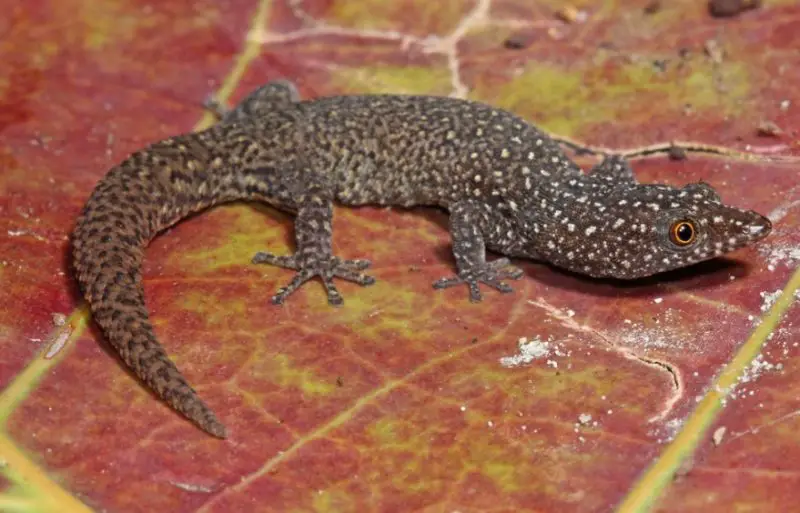
Another matchstick-sized gecko, the Ocellated Gecko (Sphaerodactylus argus), reaches a maximum length of just 2.5 inches (6 cm). They have small toe pads and eyelash-like projections over their eyes. They are brown with tiny white dots that form lines over their bodies. These geckos are busy between dawn and dusk, looking through leaf litter and other detritus for insects to nibble on. They lay solitary clutches of eggs and like empty lots over densely inhabited places.
They are thought to be quite uncommon, and their distribution is limited. They are natives of Jamaica and Cuba, with a minor population in the Lower Keys. Since they are an alien species, they are not very dangerous to the local wildlife.
Yellow-headed Gecko
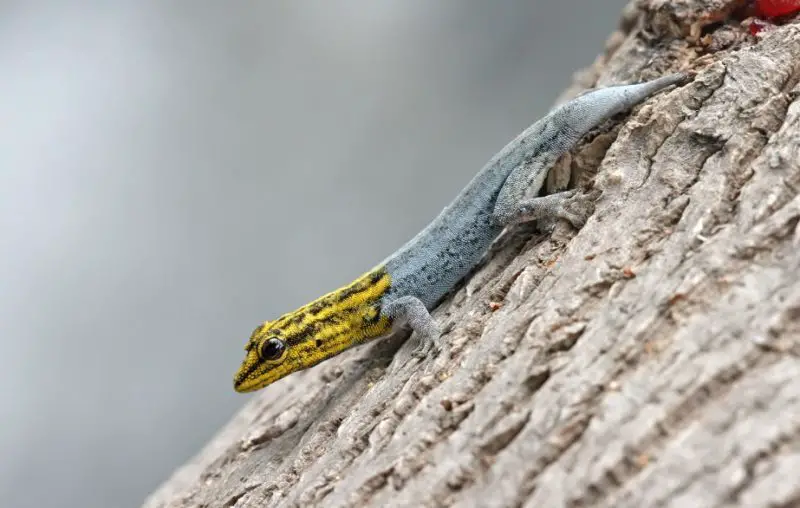
Sexual dimorphism is evident in the Yellow-headed Gecko (Gonatodes albogularis), with females having a light collar line and mottled gray body and males having yellow-orange heads and dark blue to black bodies with white tails. With no toe pads, these geckos can climb most vertical surfaces and reach up to 3.5 inches (9 cm). Their habits include foraging for small insects and spiders, and they are nocturnal and non-vocal.
They can be frequently observed scuttling in small spaces. Although they have lived in the Keys and Miami for more than 60 years, having originally come from the West Indies and Cuba, they have not increased their range and have become rare as a result of competition with more numerous, larger species.
Bibron’s Thick-toed Gecko
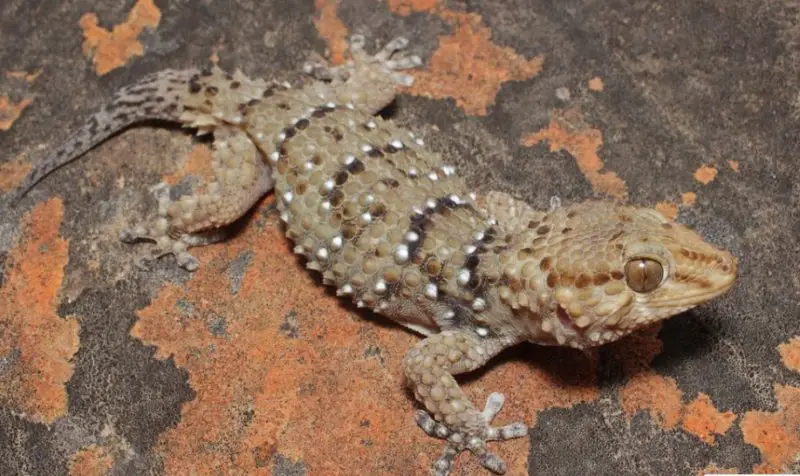
The Bibron’s Thick-toed Gecko (Pachydactylus bibronii) has dark bars and white nodules on its tan, brown, or gray body. It can grow to 5.5 inches (14 cm) in length and resembles a little crocodile due to its huge head, thick body, and characteristic bulbous toes. This nighttime predator feeds on both big and small insects, as well as occasionally other lizards.
It has a strong bite and has the ability to extract blood. They are frequently observed waiting for prey on telephone poles and walls. This gecko, which is native to Southern Africa, was brought to Brandon, Florida, in the 1970s. It does not appear to pose a threat to the local populace and has not greatly increased its range.
Giant Day Gecko
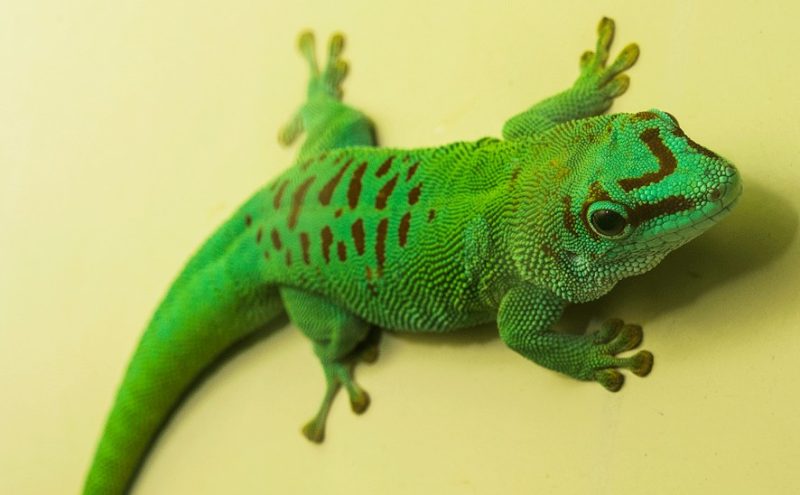
Living true to its name, the Giant Day Gecko (Phelsuma madagascariensis grandis) is mainly active during the day and can grow as large as 11 inches (28 cm). Its spherical pupils, typical of diurnal lizards, are accented by streaks of orange and red on a vivid green background. Its eyelids are immobile, making it one of the rare green lizards. It has a broad diet, including insects, nectar, pollen, and fruit sap. It prefers to climb trees and walls.
This gecko, which is native to Madagascar, can be found in Broward, Lee, and Miami-Dade counties, as well as the Florida Keys. It can survive up to 20 years in captivity after being introduced by pet owners or importers. Despite being present, it is not thought to pose a serious threat because it does not have a wide distribution throughout Florida.
Common Wall Gecko
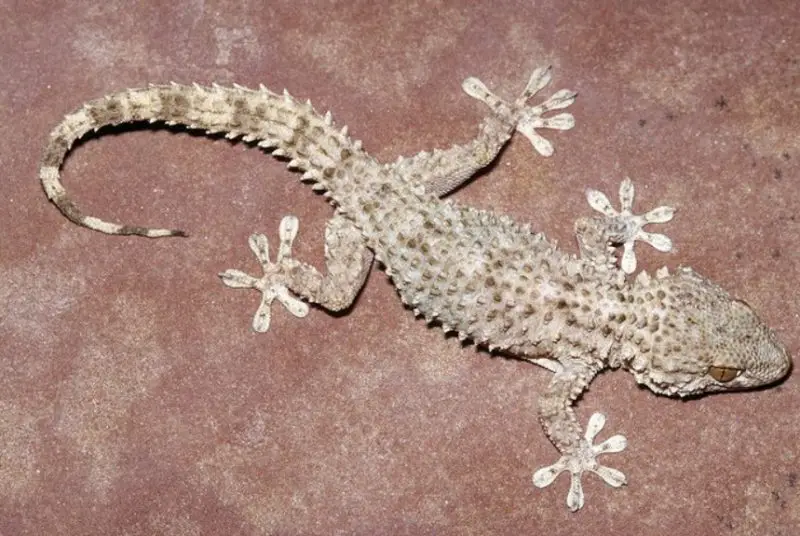
The golden eyes with vertical slits and the sandy gray skin covered in tubercles give the Common Wall Gecko (Tarentola mauritanica) a dragon-like look. It has expanded toe pads and can grow up to 6 inches (15 cm) in length. It is active at night, hunting insects on streetlight-lit walls. Males squeal and are territorial animals. In the spring and summer, females lay pairs of eggs twice a year.
In captivity, they can live up to ten years longer. Due to pet releases, they have tiny numbers in Lee and Miami-Dade counties in Florida, despite being native to the Mediterranean coast and Africa. For local lizards, they are not very dangerous.
Fan-footed Rock Gecko
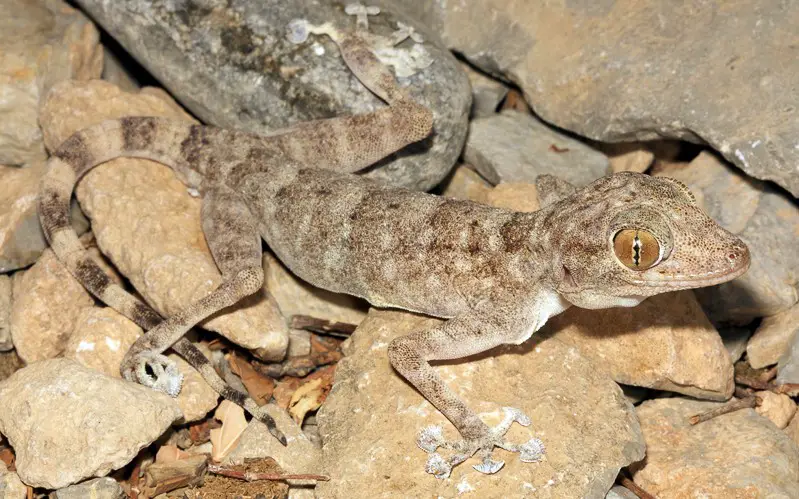
The Fan-footed Rock Gecko (Ptyodactylus hasselquisti) has dark bands on its tail and body and ranges in color from golden brown to gray, tan, or pink. It can reach a maximum length of 6 inches (15 cm). At night, its tint turns a ghostly white. Its fan-shaped toe pads and frog-like, springy rear legs are what make it so unique.
It is agile, can hunt microscopic insects on walls, and when it is scared, it arches its back to make itself appear larger. It is native to the Arabian Peninsula, Israel, Sinai, and Sudan. It was brought to Gainesville in 1995 as a pet and has since been restricted to the city.
Golden Gecko
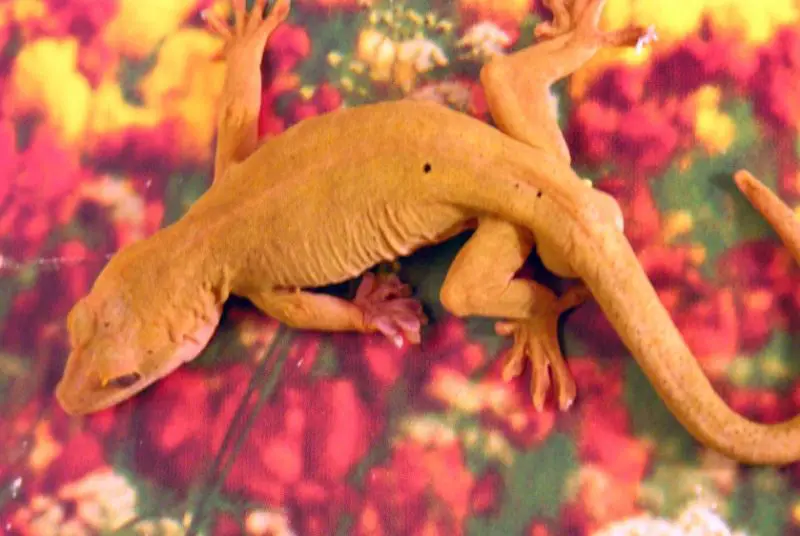
At up to 8 inches (20 cm) in length, the Golden Gecko (Gekko badenii) lives up to its name with a golden yellow coloring. They have cream-colored bellies and limbs, and males are identified by having longer tails with fleshy bumps at the base. Smaller and less lively than men, females display sexual dimorphism. These lizards that live in trees love their surroundings. They eat insects and sometimes indulge in sweet fruit juice.
In Florida, they have become feral populations due to their growing popularity as exotic pets. They are sturdy and easy to care for, despite their reputation for snappy behavior. Originally from Vietnam, sightings of wild people are uncommon in the US and are mostly recorded around Hollywood, Florida.
Gold Dust Day Gecko
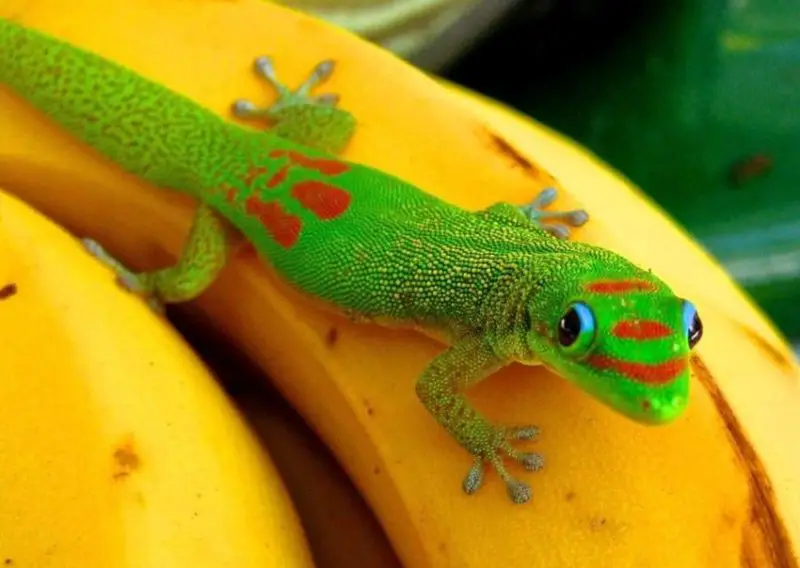
The Gold Dust Day Gecko (Phelsuma laticauda laticauda) is a striking green gecko that goes by the moniker “living jewel” due to its eye-catching blue and crimson “eyeshadow” and bright green skin speckled with gold specks. Reaching a maximum length of 5.5 inches (14 cm), it displays social cues through the use of vivid colors.
This is a diurnal species that feeds on nectar, pollen, and the fluids of overripe fruit, in addition to small insects. They deposit two eggs, which frequently stick together in group nests. They are native to Madagascar and have been seen in Florida Keys trees, most likely as escaped or freed pets. They don’t seem to be a hazard to local species based on their tiny numbers.
Mourning Gecko
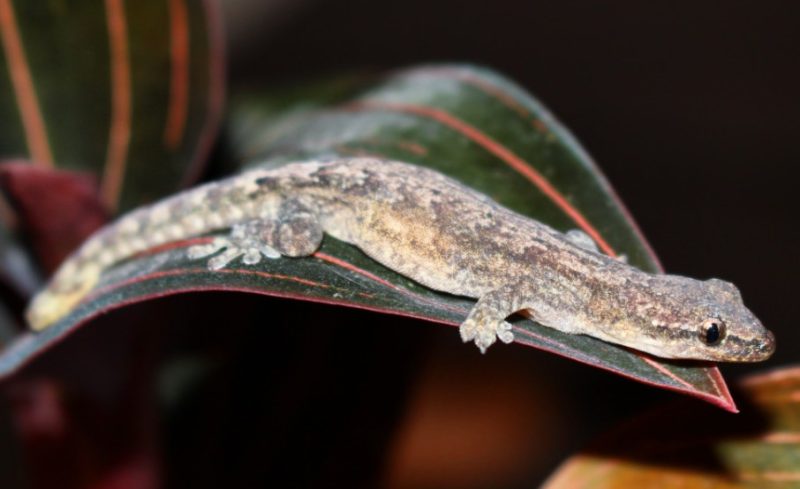
Reaching a maximum length of 3.7 inches (9.5 cm), the Mourning Gecko (Lepidodactylus lugubris complex) is a diminutive yet robust reptile. Its skin is silky and ranges from cream to brown, with a black line that runs clearly along its sides and between its eyes. This is a slow-moving, clumsy, all-female, parthenogenetic species that is most active at night and lives in trees and shrubs.
They eat a flexitarian diet and are frequently seen nibbling on leftover sweets in houses. Every four to six weeks, they lay clutches of two eggs, each of which is tolerant of saltwater, which helps the eggs spread across the ocean. They originated on the coasts of the Indian and Pacific Oceans, but due to natural dispersal or the pet trade, they are now found all over the world, including Southern Florida.

